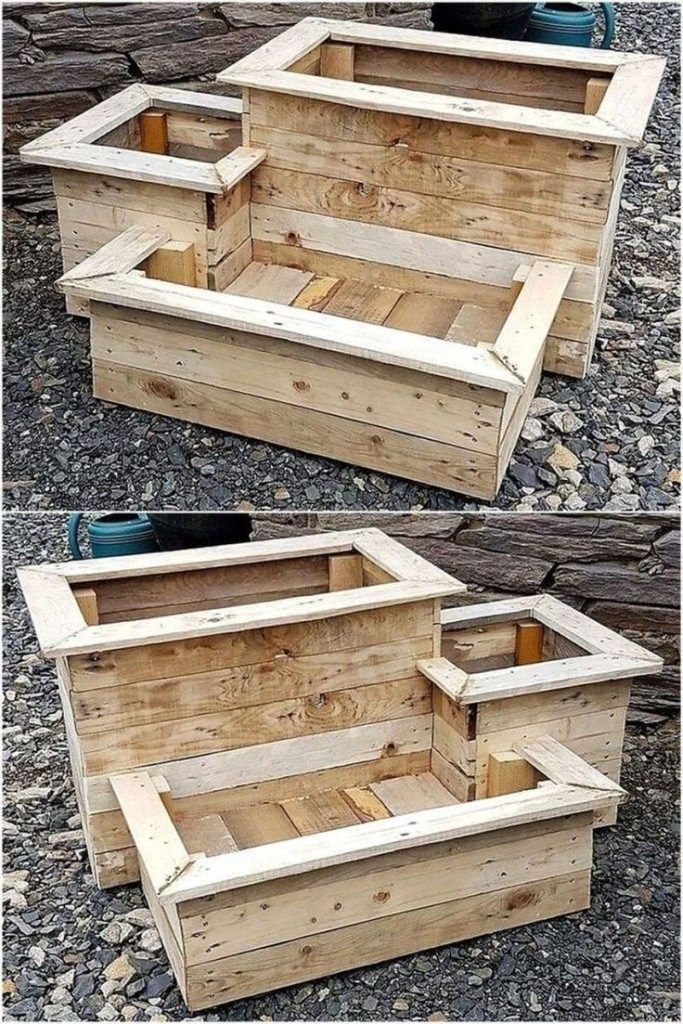Are you wondering where to buy wood for woodworking projects? Whether you’re a seasoned carpenter or a beginner DIY enthusiast, finding the right type of wood is crucial for the success of your project.
The quality and type of wood can significantly impact the overall look, durability, and functionality of your creation. In this article, we will discuss the different types of wood commonly used for woodworking projects, and where to find high-quality materials that will bring your vision to life.
When it comes to woodworking, the type of wood you choose can make all the difference. Different types of wood have unique characteristics that affect their color, grain pattern, strength, and workability. From softwoods like pine and cedar to hardwoods like oak and walnut, each type offers its own set of advantages and considerations for specific projects. Understanding these differences will help guide you in selecting the perfect wood for your next woodworking endeavor.
While there are numerous places to purchase wood for woodworking projects, two primary options include local lumberyards and specialty wood stores. Lumberyards typically offer a wide selection of standard wood species in various sizes, making them an excellent choice for common projects.
On the other hand, specialty wood stores are ideal for those seeking unique or exotic woods with distinct characteristics. In the following sections, we will explore these options in detail and provide tips on how to select the best wood for your specific woodworking needs.
Types of Wood for Woodworking
When it comes to woodworking, the type of wood you choose can greatly impact the outcome of your project. Different types of wood have different characteristics, making them suitable for various purposes. Understanding the different types of wood available for woodworking is essential to ensure that you select the right material for your project.
Hardwoods
Hardwoods are known for their durability and strength, making them popular choices for furniture making and other woodworking projects that require sturdy materials. Some common hardwoods include oak, maple, cherry, and walnut. These woods are also prized for their beautiful grain patterns, adding a visually pleasing element to your finished piece.
Softwoods
Contrary to what their name suggests, softwoods are not necessarily softer than hardwoods. Softwoods like pine, cedar, and fir are often used in construction and outdoor projects due to their resistance to decay and ability to hold up well in outdoor conditions.
Exotic Woods
For those looking to add a unique flair to their woodworking projects, exotic woods such as mahogany, teak, and rosewood offer distinct color variations and grain patterns not commonly found in domestic woods. These woods can be more challenging to find but can add a touch of luxury to your finished piece.
Understanding the characteristics of each type of wood is crucial in determining which one is best suited for your specific woodworking project. Whether you’re looking for durability, aesthetics or a unique touch, there are countless options available depending on where to buy wood for woodworking projects.
Local Lumberyards
When it comes to finding the best wood for your woodworking projects, local lumberyards are often the go-to destination. These establishments offer a wide variety of wood species, each with its unique characteristics and uses. Whether you’re in need of hardwoods like oak, maple, or cherry, or softwoods such as pine or cedar, you can find them all at your local lumberyard.
One of the key advantages of purchasing wood from a local lumberyard is the quality of the materials available. Most lumberyards take pride in sourcing their wood from reputable suppliers, ensuring that customers receive only the best products. Additionally, staff at these establishments are usually knowledgeable about different wood species and can provide valuable insight and advice to help you select the right wood for your specific project.
Furthermore, supporting local businesses by purchasing wood from a lumberyard helps to sustain the woodworking community and promote traditional craftsmanship. Not only do these establishments offer high-quality materials, but they also contribute to the preservation of a time-honored industry. So when you’re wondering where to buy wood for woodworking projects, consider visiting your local lumberyard for an extensive selection of top-notch materials.
| Advantages of Purchasing From Local Lumberyards | Benefits of Supporting Local Lumberyards |
|---|---|
| Quality materials sourced from reputable suppliers | Supporting traditional craftsmanship and woodworking community |
| Knowledgeable staff providing valuable advice | Promoting the preservation of a time-honored industry |
Specialty Wood Stores
When it comes to woodworking, sometimes you might want to find unique and exotic wood to elevate your projects. Local lumberyards are great places to start, but if you’re looking for something truly special, specialty wood stores are the way to go.
These stores offer a wide range of high-quality and hard-to-find woods that can take your woodworking projects to the next level. Here are some specialty wood stores where you can find unique and exotic wood for your next project:
Some specialty wood stores offer a variety of unique and exotic woods such as African padauk, purpleheart, zebrawood, and many others. Here are some popular options:
- Exotic Woods USA: This specialty wood store offers a wide selection of exotic woods from around the world, including rare and hard-to-find species.
- Bell Forest Products: Known for their extensive collection of unique and rare woods, this store is a favorite among woodworking enthusiasts looking for something special for their projects.
Tips for Selecting the Best Wood for Your Woodworking Projects
When it comes to woodworking projects, the type of wood you choose can make a significant difference in the outcome of your project. The quality of the wood not only affects the appearance of the finished product but also its durability and overall performance. To ensure that you select the best wood for your woodworking projects, there are several key factors to consider.
One important factor to consider when selecting wood for your woodworking projects is the wood’s grain pattern and texture. Different types of wood have unique grain patterns and textures, which can add character and visual interest to your project. For example, some woods have a tight, uniform grain pattern, while others have a more open and pronounced grain. Consider how these characteristics will complement the design of your project.
Additionally, it is essential to consider the wood’s stability and workability. Some woods are more prone to warping, twisting, or splitting, especially when exposed to changes in temperature and humidity. Others may be more challenging to work with due to their hardness or tendency to splinter. Be sure to choose a wood that is stable and easy to work with for the best results in your woodworking projects.
Finally, take into account the availability of the wood you choose. While some types of wood are readily available at local lumberyards or home improvement stores, others may require a visit to specialty wood stores or online retailers.
Consider where to buy wood for woodworking projects based on the specific type of wood you’re looking for and its availability in your area or online. By considering these factors, you can confidently select the best wood for your next woodworking project.
Conclusion
In conclusion, finding the perfect wood for your next woodworking project is crucial to the success and quality of your work. Whether you are a beginner or an experienced woodworker, the type and quality of wood you choose can make a significant difference in the outcome of your project.
Local lumberyards are excellent places to find high-quality wood, including common varieties like pine and oak. However, for more unique and exotic woods, specialty wood stores are the way to go.
When considering where to buy wood for woodworking projects, it’s important to prioritize factors such as durability, grain pattern, and overall appearance. Taking the time to carefully select the best wood for your specific project will ensure that your finished piece is not only beautiful but also functional and long-lasting.
By following our comprehensive guide on the types of wood available for woodworking, along with our tips for selecting the best wood, you can confidently embark on your next woodworking endeavor knowing that you have chosen the perfect material.
Frequently Asked Questions
How Do You Get Good Wood for Woodworking?
Getting good wood for woodworking involves choosing the right type of wood for your project, considering factors like durability, grain pattern, and availability. It’s important to purchase wood from reputable suppliers to ensure that you’re getting high-quality materials. Many woodworkers also source wood from sustainable sources or reclaimed sources to minimize environmental impact.
Where Do Furniture Makers Get Their Wood?
Furniture makers can get their wood from a variety of sources, including lumberyards, specialized woodworking suppliers, and even online retailers. Some furniture makers may also have relationships with specific timber suppliers who can provide them with the precise type of wood they need for their projects.
Additionally, some furniture makers may choose to use reclaimed or salvaged wood for a unique and sustainable approach.
What Is the Most Recommended Wood to Use for Woodworking?
The most recommended wood for woodworking often depends on the specific project and its requirements. However, hardwoods like oak, maple, cherry, and walnut are popular choices due to their strength and attractive grain patterns.
Softwoods like pine and cedar are also commonly used for certain projects due to their affordability and ease of working with hand tools. Ultimately, the best wood for woodworking is one that meets the needs of your specific project in terms of appearance, durability, and workability.

Hi everyone! I’m a woodworker and blogger, and this is my woodworking blog. In my blog, I share tips and tricks for woodworkers of all skill levels, as well as project ideas that you can try yourself.





